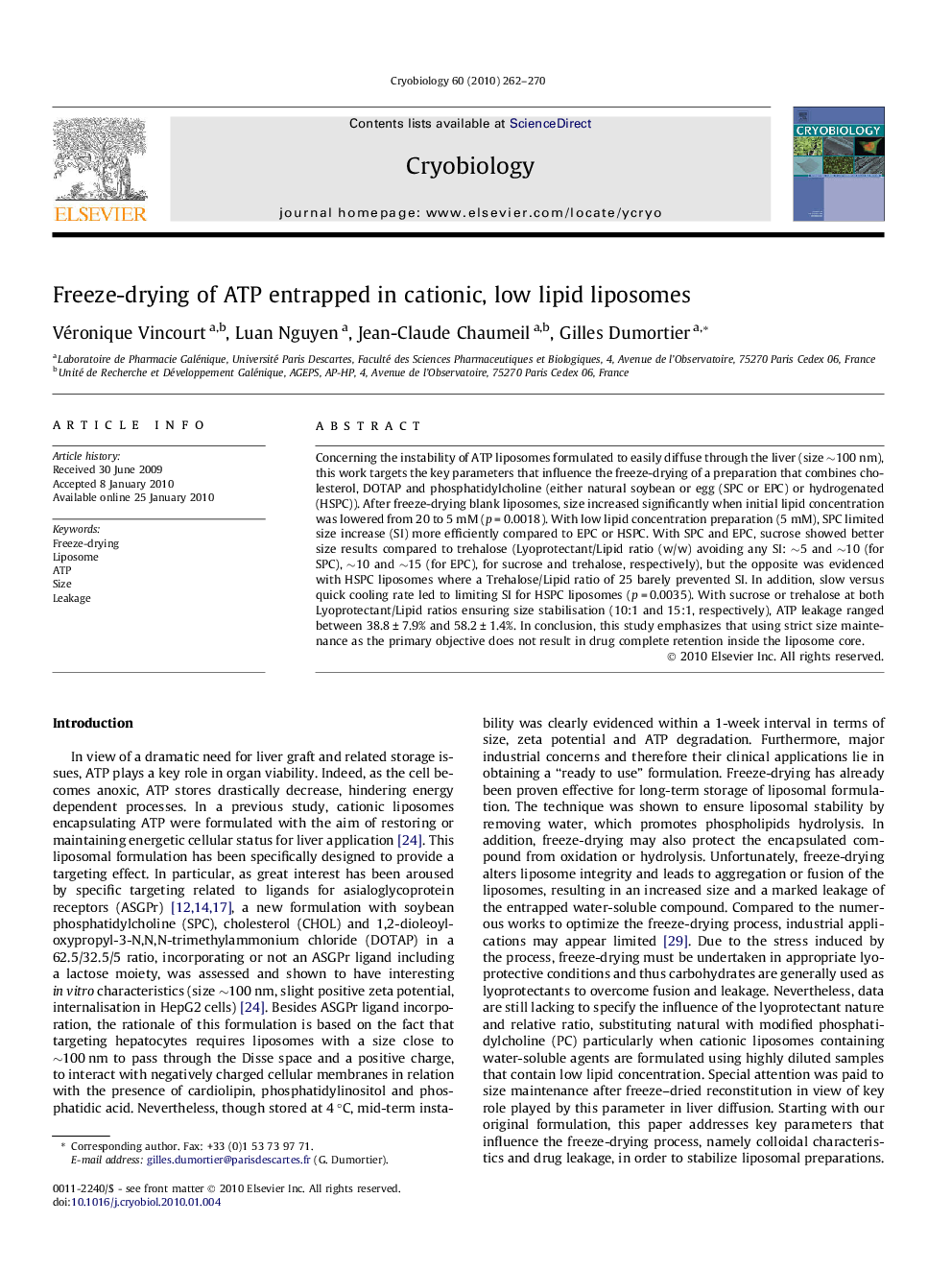| Article ID | Journal | Published Year | Pages | File Type |
|---|---|---|---|---|
| 2168730 | Cryobiology | 2010 | 9 Pages |
Abstract
Concerning the instability of ATP liposomes formulated to easily diffuse through the liver (size â¼100 nm), this work targets the key parameters that influence the freeze-drying of a preparation that combines cholesterol, DOTAP and phosphatidylcholine (either natural soybean or egg (SPC or EPC) or hydrogenated (HSPC)). After freeze-drying blank liposomes, size increased significantly when initial lipid concentration was lowered from 20 to 5 mM (p = 0.0018). With low lipid concentration preparation (5 mM), SPC limited size increase (SI) more efficiently compared to EPC or HSPC. With SPC and EPC, sucrose showed better size results compared to trehalose (Lyoprotectant/Lipid ratio (w/w) avoiding any SI: â¼5 and â¼10 (for SPC), â¼10 and â¼15 (for EPC), for sucrose and trehalose, respectively), but the opposite was evidenced with HSPC liposomes where a Trehalose/Lipid ratio of 25 barely prevented SI. In addition, slow versus quick cooling rate led to limiting SI for HSPC liposomes (p = 0.0035). With sucrose or trehalose at both Lyoprotectant/Lipid ratios ensuring size stabilisation (10:1 and 15:1, respectively), ATP leakage ranged between 38.8 ± 7.9% and 58.2 ± 1.4%. In conclusion, this study emphasizes that using strict size maintenance as the primary objective does not result in drug complete retention inside the liposome core.
Keywords
Related Topics
Life Sciences
Agricultural and Biological Sciences
Agricultural and Biological Sciences (General)
Authors
Véronique Vincourt, Luan Nguyen, Jean-Claude Chaumeil, Gilles Dumortier,
